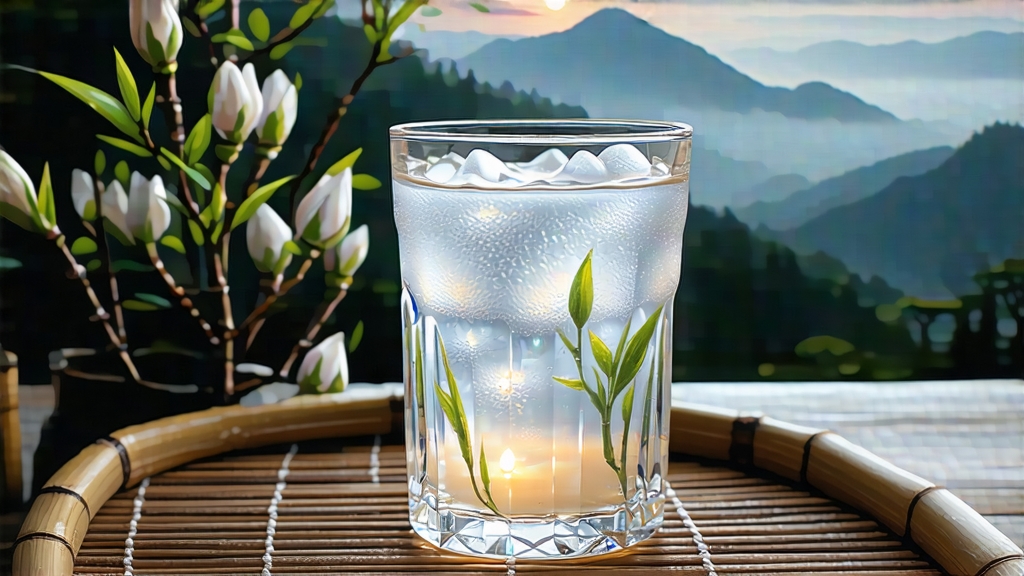
Among the six great families of Chinese tea, white tea is the least theatrical yet most elusive, and within that family Fuding Silver Needle (Bai Hao Yin Zhen) sits like a retired scholar who still remembers every dynasty. International drinkers often meet white tea through bagged “bai mu dan” or compressed cakes marketed as weight-loss miracles, but the original, unblended Silver Needle remains a quiet legend even inside China. This essay invites you to listen to that legend—its birth in coastal Fujian, its minimalist craft, its slow aromatics, and the way it rewards patience from the first sip to the tenth infusion.
-
Historical echoes
Song dynasty emperor Huizong (1082-1135) wrote in his “Treatise on Tea” that the most coveted tribute consisted of “white buds plucked before the insects wake.” Archaeologists take this as the first textual flirtation with white tea, although the modern meaning of the category only stabilised during the late Qing. Fuding county, wedged between the Wuyi foothills and the East China Sea, enjoyed a micro-climate where maritime fog met mineral-rich red soil. Local big-white varietals (Da Bai Hao) produced unusually thick buds whose down reflected moonlight, giving rise to the romantic name “Silver Needle.” By 1891 Fuding merchants were loading chests of the fluffy tea onto junks bound for Hong Kong and, indirectly, Victorian London pharmacies where it was sold as “a gentle alternative to Indian black.” The 1915 Panama-Pacific International Exhibition awarded Silver Needle a gold medal, sealing its global aura even before China herself had a modern postal code. -
Terroir and varietals
Authentic Silver Needle comes only from Fuding and neighbouring Zhenghe, both within Fujian’s Ningde prefecture. The Protected Geographic Indication (PGI) drawn in 2010 forbids the name on buds grown outside these latitudes, much like Champagne in France. Inside the zone two clonal bushes dominate: Fuding Da Bai (buds 3.2–4.1 cm, 11 % polyphenols) and the earlier-sprouting Zhenghe Da Bai (buds 2.8–3.6 cm, 9.8 % polyphenols). The former yields a creamier liquor, the latter a more floral nose, yet both must be picked in a five-day window around Qingming festival when the bud is still closed like a pearl and the first leaf has not unfolded. One kilogram of finished tea needs roughly 30 000 buds, all plucked before ten o’clock in the morning so that surface moisture evaporates before the long withering night. -
The craft of “doing nothing”
White tea’s slogan is “no frying, no rolling, no kneading,” but the apparent passivity hides a choreography of micro-decisions. After picking, the buds are spread on bamboo trays 1.5 cm thick and left under a shaded pavilion whose walls can be rolled up or down to chase the breeze. For Silver Needle the withering lasts 48–60 hours, far longer than for White Peony, because the intact bud holds more moisture. The tea master’s primary tool is a thermometer tucked inside the sleeve of his cotton jacket; if ambient humidity climbs above 75 % he lights a gentle charcoal brazette whose smoke never touches the leaf. When the bud’s moisture drops to 10 % it enters a 30-minute “revival rest,” stacked 20 cm high so that residual heat equalises inside each needle. Finally the tea is baked at 40 °C for twenty minutes, a temperature so low that a hand can rest on the tray. The goal is not to cook but to “polish the fur,” setting the silvery down that will later shimmer in the cup. -
From leaf to liquor: brewing rituals
Silver Needle is forgiving yet shy; it dislikes boiling water but opens like a morning glory when treated with patience. The classical gaiwan (lidded bowl) of 120 ml is ideal: pre-warm with 85 °C water, add 3 g of tea, and fill until the needles float like tiny icebergs. The first infusion should last 45 seconds; subsequent steeps add ten seconds each. Western drinkers may use a tall glass—4 g per 250 ml, 80 °